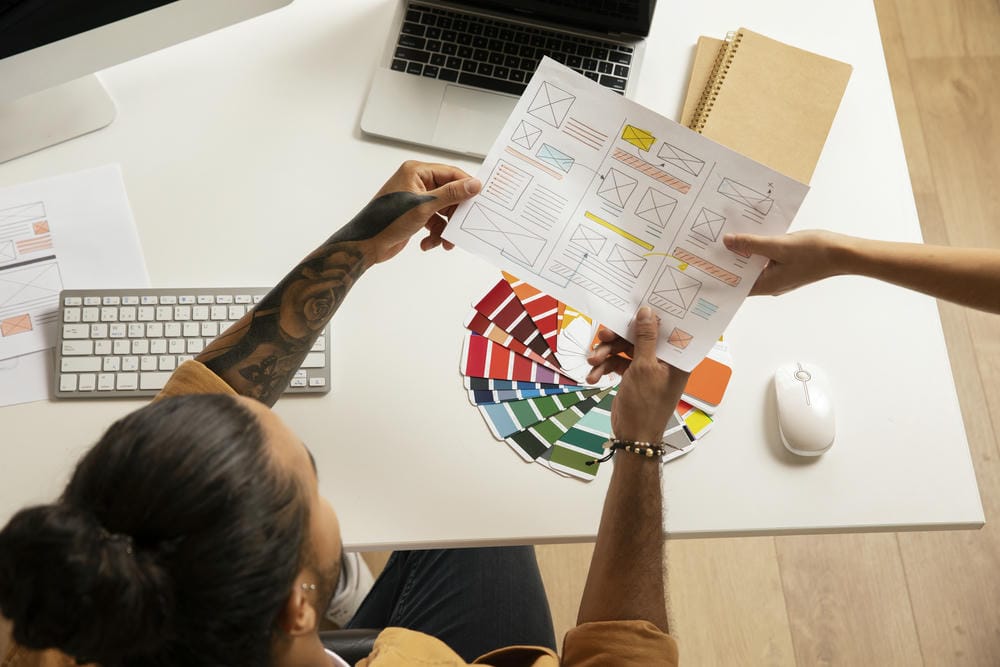What Is Color Psychology and Why Is It Important?
Color psychology is the study of how different colors influence human mood and behavior. Have you ever felt a certain way in a room with colored walls? For instance, a yellow room might make you feel stressed, while a blue room could evoke calmness. Why does this happen?
Colors are a powerful communication tool, capable of affecting emotions, actions, and even physiological responses. They can enhance memory and convey nonverbal information, making them a vital part of our lives. To explore related concepts, check out our Guide to Visual Branding.
Psychological Effects of Colors
How do colors affect our mood? Why do they hold such a powerful influence in our lives? Some colors carry universal meanings:
- Warm Colors: Red, orange, and yellow are known as warm colors. These hues raise body temperature and can evoke feelings of anger or excitement.
- Cool Colors: Blue, purple, and green are considered cool colors. They often promote calmness but may sometimes convey sadness or indifference.
According to a 2023 study by the Journal of Environmental Psychology, colors can influence heart rate and stress levels by up to 15%.
Where Is Color Psychology Applied?
Colors surround us and are constantly observed. The key question is: where and how should we use specific colors to achieve the desired psychological impact? Color psychology is applied in various fields, including:
- Advertising
- Interior design
- Fashion
- Website design
- Product manufacturing
- Packaging
This article explores these applications in detail.
How Can I Use Color Psychology in My Business?
As mentioned, colors influence human behavior and decision-making, particularly in purchasing products and services. Choosing colors may seem simple, but it’s a critical decision. Colors are used to engage audiences and boost sales, making it essential for designers and marketers to understand which colors suit specific purposes.
Color Psychology in Major Brands
Let’s examine how some major brands leverage color psychology:
- Apple: A tech giant producing smartphones and smart devices, Apple’s logo—a bitten apple—uses gray, black, and white. Most products feature gray, a neutral color symbolizing balance, creating a simple, clean, and consistent image for its audience.
- Google: The world’s largest search engine, used daily by millions, employs the primary colors yellow, red, and blue, plus a green letter. These colors are analyzed below for their psychological impact.
- Health and Hygiene Brands: These brands often use green, blue, or white to evoke safety, calmness, and trust. Some designers incorporate purple to stand out and attract attention.
- Food Industry: Fast-food brands frequently use orange, red, and yellow, which stimulate appetite. Organic food brands, however, opt for green and brown to convey freshness and earthiness.
Color Psychology in Website Design
Is it a coincidence that platforms like Facebook or the former Twitter branding use blue? Not necessarily. However, blue may not suit your website, even if it fits your brand. Consider other website elements when choosing colors. Colors significantly impact brand recognition.
Let’s review the basics of color psychology for key colors:
Yellow Color
Yellow is a bright color associated with happiness, vitality, and youth. However, it can also evoke negative emotions like fear, stress, or deceit. Use bright yellow sparingly to energize or create joy. It’s excellent for drawing attention to call-to-action buttons. Excessive yellow can strain the eyes, so avoid overuse.
Green Color
Green is a calming, balancing color linked to growth, health, nature, wealth, peace, and support. Use green for websites related to science, tourism, medicine, or the environment. Avoid green for luxury or high-end products.
Red Color
Red increases heart rate and blood circulation, symbolizing love and excitement but also war, fire, or anger. Use red for food, sports, emergency services, or healthcare. Avoid excessive red, as it can create overwhelming excitement.
Orange Color
Orange is a vibrant color tied to fun, energy, and warmth, ideal for communication. Use it to highlight shares, purchases, or sign-ups on your website.
Purple Color
Purple evokes royalty, power, and wealth. Dark purple conveys grandeur, while light purple suits spring or romantic themes. It’s ideal for cosmetics, anti-aging products, astrology, yoga, or brands targeting teenage girls or women. Purple is calming but a poor choice for grabbing attention, and dark purple is unsuitable for websites.
Black Color
Black is a strong color representing authority, stability, death, mystery, and formality. Its impact depends on paired colors. It’s excellent for cosmetics or chic products but can evoke danger if overused.
Blue Color
Blue is associated with trust, stability, calmness, quality, and competence. Light blue feels refreshing and energizing. It’s ideal for healthcare, dentistry, medical, or scientific websites. Excessive blue can make a website feel cold and reduces appetite, so avoid it for food-related sites.
Brown Color
Brown is a warm, natural color linked to earth, groundedness, and friendliness. It can stimulate appetite, making it suitable for chocolate, coffee, real estate, or veterinary ads. Brown can feel dull or overly traditional, so it’s not ideal for attention-grabbing.
White Color
White symbolizes cleanliness, honesty, and safety. When paired with gold, silver, or gray, it’s effective for home interior design. White’s impact depends on accompanying colors and can be used for any website.
Industries Using Color Psychology in Products
- Clothing and apparel
- Electronics and automotive
- Beauty and cosmetics
- Home appliances and furniture
Conclusion
Colors play a crucial role in conveying information and influencing mood. They also affect the products people choose, such as car colors or room decor. This article aimed to provide comprehensive insights into color psychology for creating websites, products, and more. We hope it meets your needs.








